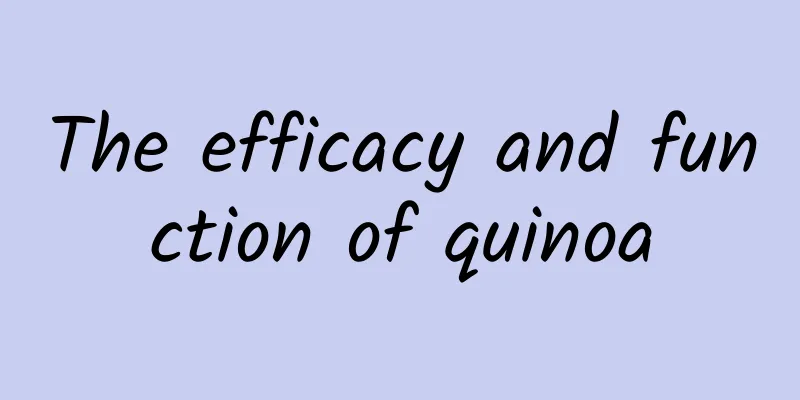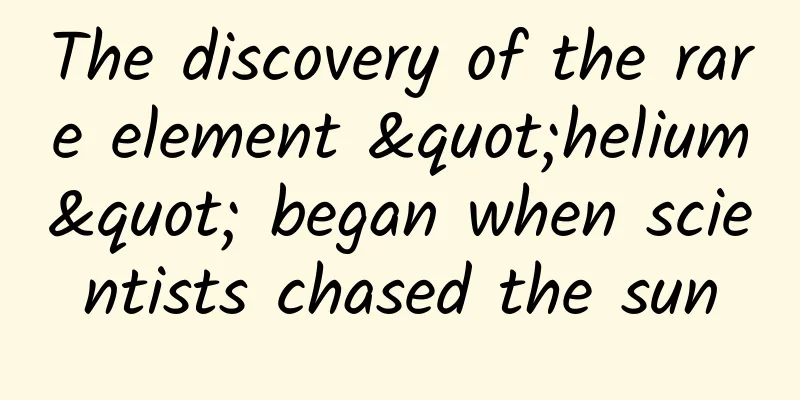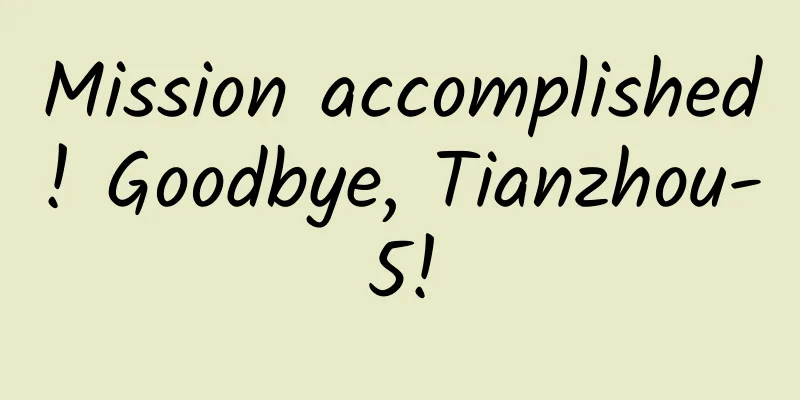The efficacy and function of quinoa

|
Recently, major TV channels have launched various health programs, and food programs have also introduced special health-preserving dietary therapy methods. All aspects show that the concept of health preservation is gradually deepening in people's understanding. Next, we will introduce a health-preserving medicinal herb, quinoa. [Other names] Lai (The Book of Songs), Li, Manhua (Erya), Menghua (Erya with Guo Pu's annotation), Crane's Head Grass (Tu Su Materia Medica), Red Fallen Quinoa, Shunmanggu (Compendium of Materia Medica for Famine Relief), Red Heart Gray Croton (Geng Xin Yu Ce), Fallen Quinoa, Rouge Vegetable (Compendium of Materia Medica), Feiyang Grass (Flora of Guangzhou), Gray Amaranth (Sichuan Chinese Materia Medica), Gray Quinoa, Gray Polygonum (Commonly Used Chinese Herbal Medicines in Shanghai), Gray Quinoa, Gray Vegetable, Gray Strip (Medicinal Plants in China's Desert Areas). [Source] It is the whole young and tender herb of Chenopodiaceae . Harvested from June to July, used fresh or sun-dried. [Original form] Annual herb, 0.4 to 2 meters high. The stem is erect, ribbed and green-striped. Leaves are alternate; lower leaves are rhombic-ovate or ovate-triangular, obtuse at apex, with dentate or irregularly lobed margins, and cuneate base; upper leaves are lanceolate; often covered with white powder on the underside. The flowers are small, bisexual, yellow-green, with 8 to 15 flowers gathered in a cluster, and many flowers clustered into large panicles; 5 tepals, ovate, with a green ridge in the center of the back; 5 stamens, extending out of the tepals; 2 stigmas, not exposed outside the tepals. The utricle is slightly flat, nearly round, and wrapped in the perianth. Flowering period is from August to September. The fruiting period is from September to October. [Habitat distribution] Growing in wasteland, roadsides and hillsides. Distributed all over the country. 【Chemical composition】 The whole plant contains volatile oil. 68% of the leaf lipids are neutral fats, including palmitic acid, tetracosanoic acid, oleic acid, linoleic acid, sitosterol, nonacosane, oleyl alcohol, wax, etc. The roots contain betaine, amino acids, sterols, oils, etc. The seeds contain 5.54-14.86% oil. [Pharmacological action] Quinoa can be eaten, used as feed or medicine. The variant of quinoa grown in Japan has an excitatory and then paralyzing effect on earthworms. Its minimum effective concentration is 0.5% for water extract and 1% for alcohol extract; the worm expulsion rate of water extract is 33%. Eating quinoa and then being exposed to sunlight can cause "quinoa photoallergic dermatitis". Some say that this disease seems to be related to changes in women's endocrine system. A report of 207 patients with phyto-photodermatitis showed that 8 of them were caused by eating quinoa, accounting for 42.5%. Intramuscular injection of vitamin B12 is more effective. Large amounts of concentrated decoctions, alcohol extracts, and ether extracts of a variety of quinoa grown in Japan injected subcutaneously into rabbits can also cause allergic reactions to sunlight and ultraviolet rays, with redness, edema, and even subcutaneous hemorrhage and necrosis not only at the injection site but also at distant sites, as well as anemia and weight loss. This may be because the photosensitive substances in the quinoa leaves enter the body and are then exposed to sunlight. No similar symptoms were observed in guinea pig feeding experiments. When a 70% alcohol extract of Chenopodium album is used on frogs, toads, pigeons, mice, guinea pigs, rabbits, etc., it first stimulates and then inhibits their breathing, eventually leading to death due to respiratory paralysis; it also has the effect of lowering blood pressure and inhibiting the heart; it can increase the movement of smooth muscle organs and mainly contract peripheral blood vessels; it often has a paralyzing effect on skeletal muscles and motor nerves; but continuous use in rabbits and mice can gradually produce habit and weaken the paralyzing effect, while at the same time, symptoms such as congestion, edema, and bleeding occur in the ears, limbs, and tail roots, and can be aggravated by ultraviolet radiation. 【Nature and flavor】 "Compendium of Materia Medica": "sweet, neutral, slightly toxic." 【Functions and indications】 Clears away heat, promotes dampness and kills insects. Treat dysentery, diarrhea, eczema, itchy rashes, and poisonous insect bites. [Usage and Dosage] For oral use: decoct in water, 0.5 to 1 liang. For external use: decoct in water for gargling or fumigation; or mash and apply. [Additional prescription] ① For treating dysentery and diarrhea: 1 to 2 liang of whole herb of Glehnia littoralis. Take it in decoction. (Common Chinese Herbal Medicines in Shanghai) [Remarks] The gray-green Chenopodium album of the same genus is very similar in appearance to Chenopodium album, but the plant is smaller; the lateral flowers have 3 to 4 tepals; the oblate seeds have notched protrusions. It is used as a human medicine in Tibet and other regions, along with Quinoa. 【Excerpt】 《*Dictionary》 [Source] From Compendium of Materia Medica: Quinoa is found everywhere. It is the red-hearted variety of the grey mulberry. Its stems and leaves are slightly larger and can be eaten when tender. The above is a detailed description of the effects and eating methods of quinoa. Medicines like quinoa are very effective in treating diseases. However, it should be noted that when using quinoa, it needs to be used in moderation and not too much, otherwise it will not be of any benefit to the body. |
<<: The efficacy and function of Maihu
>>: The efficacy and function of pear peel
Recommend
What are the medicinal values of Uncaria rhynchophylla
Uncaria rhynchophylla can be regarded as a tradit...
How long does it take to decoct Chinese medicine?
When decocting Chinese medicine, the time require...
Understand these "skins": What are the differences between cold skin, rice skin, and rolled noodle skin?
The annual midsummer has arrived on time. In this...
Are niche milks reliable? Are they really nutritious or just a waste of money?
Are niche milks reliable? Are they really nutriti...
What are the medicinal values of lily?
When it comes to lilies, everyone must be familia...
Biohazard in the rainforest! The terrifying poison dart frog is really poisonous...
(Image from copyright gallery) Deep in the dense ...
The efficacy and function of dragon head grass
Many people choose dragon head grass because of i...
Be careful when shopping online! Keep this 618 online shopping fraud prevention guide!
The annual 618 is here again! Have you already st...
The efficacy and function of Leigonglian
Thunder god is a medicinal material that can trea...
Effects and functions of Polygonatum sibiricum
Grassroots entrepreneurship is a very common word...
The efficacy and function of Bailong Piercing Color
As the pressure of modern life increases, more an...
Can we eat the wild vegetables picked from the green belts?
The weather has warmed up, the trees have started...
The efficacy and function of yellow back grass fruit
There are so many medicinal herbs in the world, a...
Blogger picked "snow lotus" and took a video to show off? Local response!
"This is the Tianshan Snow Lotus, the legend...
Chinese medicine jade butterfly
Because there are many types of Chinese medicinal...









